|
This month we are going to compare two typical grapes belonging to quite
distant lands, both Italian and however characterized by very different
qualities. Montepulciano is the indisputable protagonist of the wine making
scene of Abruzzo and Marches. Known and cultivated in other Italian region as
well - in particular, Molise, Apulia and Umbria - Montepulciano, one of the
greatest Italian red berried grapes, has its highest expression in Abruzzo and
Marches. Cannonau is one of the great red berried grapes of Sardinia, among the
protagonists of the Italian wine making scene. This grape is also found in
other Italian regions - although known with different names - and its origin is
being debated since a very long time. Some in fact support the idea Cannonau is
a grape of Spanish origins, others believe it is an indigenous variety of
Sardinia and from here introduced to Spain and France.
Grapes capable of expressing wines with a quite different character, however
protagonists of the respective territories. Both can be used in many wine
making techniques, giving to the glasses interesting interpretations both in
the wine making in inert containers - such as steel or cement tanks - as well
as in cask and barrique. The versatility of these two varieties gives excellent
results also by the blending with other grapes, both autochthonous and
international. One of those, for example, is the well known blending of
Cannonau and Bovale grapes, both representing some of the finest red wines of
Sardinia. The same can be said for Montepulciano, a grape blending very well to
other varieties, including Sangiovese, with which gives, in particular, wines
of Conero and Piceno areas in the Marches region. Montepulciano and Cannonau
can be appreciated for their respective characters and, also in case they are
blended to other grapes, they never pass unnoticed while claiming their
identity in the taster's senses.
Montepulciano, after having been received a very low interest from producers
and consumers, comes to a new life thanks to the willingness of some wineries
of Abruzzo and Marches. After having contributed for a long time to the
enrichment of wines of other regions, Montepulciano walks its triumphal
march upwards to the Olympus of wine right from its land of origin: Abruzzo. It
is right from this region the grape begins its glorious march while becoming -
today - one of the most interesting and important varieties of Italy. The
success of Montepulciano has also been helped by producers of Marches who, in
the course of time, favored its use in wines instead of Sangiovese. Conero
and Piceno represent the revaluation of Montepulciano in Marches. If it is true
that once the blending with Sangiovese was common, in particular in the Piceno
area, today it is more common to see wines produced with 100% Montepulciano.
This choice, it should be said, has always been favored in Abruzzo: the most
famous red wine of this region is in fact generally made with Montepulciano
only.
The origins of this important variety of Central Italy are quite uncertain,
while noticing that Montepulciano has no connection, nor geographical nor
viticultural, with the well known town of the same name in province of Siena,
Tuscany, and famous in the world for its Vino Nobile. Today most support the
idea Montepulciano originates from Torre de' Passeri, a town in province of
Pescara, Abruzzo. Of this variety exist few and uncertain historical references
and the first written evidences are dated back to the 1700s. It should also be
noticed that Montepulciano has been confused for a very long time with
Sangiovese, a grape having no connection with it. Fundamental pillar of red
wines of Abruzzo and Marches, Montepulciano is also found in Umbria, Molise and
Apulia, also used in the composition of denominazione d'origine
controllata wines. Montepulciano, as well as Sangiovese, is one of the most
important grapes of Central Italy and the progressive revaluation done with
time - in particular in Abruzzo and Marches - allowed this grape to be
considered today, and with no objection, one of the most significant grapes of
the Italian wine scene.
Cannonau has been considered for a long time a grape introduced by Spaniards in
Sardinia, identified as Garnacha Tinta, a very common grape in Spain. Important
archaeological discoveries done in certain areas of the island allowed to
completely rewrite the origin and history of Cannonau. The discovery of grape
pips dated back to 3200 years ago and belonging to the variety today known as
Cannonau, proved that in Sardinia cultivation of vine is a very ancient
practice, preceding the arrival of Phoenicians in the island. This important
discovery has also allowed the rewriting of the history of viticulture
in the Mediterranean area, by confuting the hypothesis supporting vine was
introduced by Phoenicians first and then Greeks. The important discovery
allowed the new definition of the history of Cannonau and many today support
the idea this variety was introduced in Spain under the Aragon rule in the
island by importing it right from Sardinia.
Cannonau, under different names, is also spread in other parts of the world, in
particular Italy and Europe. The famous grape is in fact known in Spain as
Garnacha Tinta and Grenache in France, whereas in Italy - depending on the area
- it is called Gamay del Trasimeno, Gamay Perugino, Alicante, Granaccia and
Tocai Rosso. Cannonau is the most common and cultivated red berried grape in
Sardinia, which wines are also ranked as Denominazione d'Origine
Controllata in the whole territory of the island. The renowned red of Sardinia
has its best expressions in particular in the areas of Jerzu, Capo Ferrato and
Nepente di Oliena. Cannonau is suited for different wine making
interpretations: not only in red wines - either aged in inert container and
cask - but also rose and fortified wines as well.
|
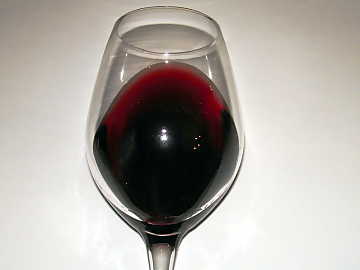 | |
| The appearance of Cannonau di
Sardegna: intense and brilliant ruby red, a hue clearly visible in nuances as
well | |
|
Our tasting by contrast will examine a Montepulciano d'Abruzzo and a Cannonau
di Sardegna, by choosing two bottles belonging to the same vintage and aged in
cask. In order not to excessively affect the profiles of the two grapes with
unavoidable tertiary aromas contributed by wood and time, wines must not be
more than three years old. On this regard, it should be noticed the production
disciplinary of Montepulciano d'Abruzzo provides for the use of a minimum 85%
of this grape, therefore it is essential our wine to be exclusively made with
Montepulciano. Also the disciplinary of Cannonau di Sardegna provides for the
use of a small part of other grapes cultivated in the island, therefore it is
essential - also in this case - to choose a wine produced with 100% Cannonau.
The two wines will be poured in distinct glasses and served at the temperature
of 18 °C (65 °F).
Let's pour Montepulciano and Cannonau in their respective glasses and begin our
tasting by contrast. On this regard, we will use a sheet of paper or a white
towel which will allow a better evaluation of color. Let's tilt the glass of
Montepulciano, while making sure the whole glass is over the white towel. Let's
observe the base of the glass: Montepulciano shows an intense ruby red color,
sometimes even deep. Observe now the wine at the edge of the opening: here we
will notice an intense ruby red nuance and, sometimes, a purple red hue as
well. Let's now pass to the glass of Cannonau and, also in this case, we
will tilt it over the towel. The color of the great Sardinian wine shows an
intense and brilliant red, a hue which can be observed in the nuances as well.
By keeping the glasses tilted and side by side, let's observe the two wines in
order to compare differences.
Let's now pass to the evaluation of aromas, undoubtedly one of the most
exciting and interesting aspects of wine sensorial evaluation. Montepulciano
and Cannonau are two grapes capable of making wines - in their respective
territories - having remarkable differences in their aromatic profile. Wines
produced with Montepulciano, as opposed to Cannonau, are capable of strongly
dividing wine lovers because of its particular personality. The famous grape
from Abruzzo expresses organoleptic qualities such to be usually considered at
the extremities of pleasingness, rarely being in the middle part.
Cannonau, also in this case a grape capable of making wines of remarkable
personality, certainly is easier and more direct. They however are two great
grapes, absolute protagonists of the Italian wine scene, both generous in
making wines of remarkable value and personality.
Let's begin the evaluation of aromas from the glass of Montepulciano. The
opening of this wine let us understand, since the beginning, the great
olfactory personality of this variety. It will be in fact perceived a
vinous character, sometimes even rustic, something being very
typical in Montepulciano and capable of dividing wine lovers: you love it or
hate it. Moreover, the opening of Montepulciano gives aromas of plum, black
cherry, blackberry and violet. The swirling of the glass will complete the
aromatic profile with blueberry and the typical tertiary sensations of wood,
such as vanilla, chocolate and a pleasing balsamic touch of menthol. The
opening of Cannonau is evidently different: in this wine will be mainly
perceived aromas of black cherry, plum, blueberry and violet. Let's now swirl
the glass in order to favor the development of other aromas, in which we will
perceive raspberry, blackberry and, not being uncommon, aromas recalling
aromatic herbs such as juniper and myrtle. Also in this case will be perceived
the typical aromas contributed by the aging in wood.
Let's now pass to the gustatory evaluation of the two wines, beginning from
Montepulciano. The attack will be characterized by an evident sensation of
astringency, then followed by the warm and round effect of alcohol, therefore a
pleasing crispness. Montepulciano keeps its rustic character to the
taste as well, however integrated and well mixed to the other gustatory
characteristics of the wine. We will clearly perceive flavors of plum, black
cherry and blueberry, sometimes blackberry too. Let's now pass to the glass of
Cannonau and take a sip of wine. The attack of the Sardinian wine is
characterized in the mouth by a good sensation of astringency, also in this
case followed by the generous warm and burning effect of alcohol. As opposed to
Montepulciano, in Cannonau will be perceived a weaker crispness, a quality that
- in both cases - is strongly affected by the aging in wood and the roundness
given by time. The correspondence to the nose is very good: in the mouth we
will perceive flavors of black cherry, plum and blueberry.
The final phase of the tasting is very interesting in both wines. The finish of
Montepulciano is long, leaving in the mouth flavors of plum, black cherry,
blueberry and blackberry, as well as its characteristic vinous
personality, vaguely rustic. It will also be perceived a pleasing
crispness well supported by the roundness given by wood and time. The finish of
Cannonau is equally long and in which it is possible to perceive flavors of
black cherry, plum, blueberry and, sometimes, raspberry. As opposed to
Montepulciano, here it will be perceived a weaker impact of crispness, however
both roundness and the warmth of alcohol will support the other gustatory
sensations of the wine. In their respective territories, Montepulciano and
Cannonau play roles of primary importance, by identifying the respective
regions with their wines. In both cases we can certainly talk about stories
with a happy ending: grapes once scarcely considered by many, they have become
giants of irreplaceable magnificence and today - with no doubt - they are among
the greatest grapes of Italy.
|


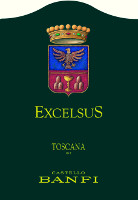
 Merlot (60%), Cabernet Sauvignon (40%)
Merlot (60%), Cabernet Sauvignon (40%) Intense ruby red and nuances of ruby red, little transparency.
Intense ruby red and nuances of ruby red, little transparency. intense, clean, pleasing, refined and elegant, starts with hints of
black currant, black cherry and plum followed by aromas of blueberry,
violet, vanilla, iris, cinnamon, tobacco, chocolate and eucalyptus.
intense, clean, pleasing, refined and elegant, starts with hints of
black currant, black cherry and plum followed by aromas of blueberry,
violet, vanilla, iris, cinnamon, tobacco, chocolate and eucalyptus.
 Tannic attack and however balanced by alcohol, full body, intense
flavors, pleasing roundness.
Tannic attack and however balanced by alcohol, full body, intense
flavors, pleasing roundness.
 Persistent finish with flavors of black currant, black cherry and plum.
Persistent finish with flavors of black currant, black cherry and plum. 20 months in barrique.
20 months in barrique. Game, Roasted meat, Stewed and braised meat, Hard cheese
Game, Roasted meat, Stewed and braised meat, Hard cheese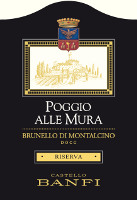
 Sangiovese
Sangiovese Brilliant ruby red and nuances of garnet red, moderate transparency.
Brilliant ruby red and nuances of garnet red, moderate transparency. Intense, clean, pleasing, refined and elegant, starts with hints of
black cherry, plum and dried violet followed by aromas of blueberry,
blackberry, raspberry, vanilla, tobacco, chocolate, cinnamon, leather,
mace, licorice and menthol.
Intense, clean, pleasing, refined and elegant, starts with hints of
black cherry, plum and dried violet followed by aromas of blueberry,
blackberry, raspberry, vanilla, tobacco, chocolate, cinnamon, leather,
mace, licorice and menthol.
 Tannic attack and however balanced by alcohol, full body, intense
flavors, agreeable.
Tannic attack and however balanced by alcohol, full body, intense
flavors, agreeable.
 Very persistent finish with long flavors of black cherry, plum and
blackberry.
Very persistent finish with long flavors of black cherry, plum and
blackberry.
 2 years in barrique and cask, 12 months in bottle.
2 years in barrique and cask, 12 months in bottle. Game, Roasted meat, Stewed and braised meat, Hard cheese
Game, Roasted meat, Stewed and braised meat, Hard cheese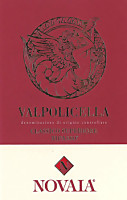
 Corvina (50%), Corvinone (30%), Rondinella (20%)
Corvina (50%), Corvinone (30%), Rondinella (20%) Brilliant ruby red and nuances of garnet red, moderate transparency.
Brilliant ruby red and nuances of garnet red, moderate transparency. Intense, clean, pleasing and refined, starts with hints of black
cherry, blackberry and plum followed by aromas of dried violet, vanilla,
chocolate, tobacco, mace and menthol.
Intense, clean, pleasing and refined, starts with hints of black
cherry, blackberry and plum followed by aromas of dried violet, vanilla,
chocolate, tobacco, mace and menthol.
 Properly tannic attack and however balanced by alcohol, good body,
intense flavors, pleasing roundness.
Properly tannic attack and however balanced by alcohol, good body,
intense flavors, pleasing roundness.
 Persistent finish with flavors of black cherry, blackberry and plum.
Persistent finish with flavors of black cherry, blackberry and plum. 12 months in barrique, 6 months in bottle.
12 months in barrique, 6 months in bottle. Broiled meat and barbecue, Stuffed pasta, Stewed meat with mushrooms, Hard cheese
Broiled meat and barbecue, Stuffed pasta, Stewed meat with mushrooms, Hard cheese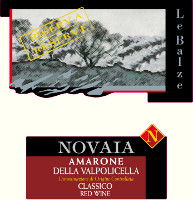
 Corvina, Corvinone, Rondinella, Oseleta
Corvina, Corvinone, Rondinella, Oseleta Brilliant ruby red and nuances of garnet red, little transparency.
Brilliant ruby red and nuances of garnet red, little transparency. Intense, clean, pleasing, refined and elegant, starts with hints of
blackberry, black cherry and dried violet followed by aromas of plum,
blueberry, vanilla, tobacco, chocolate, cinnamon, licorice, mace and
menthol.
Intense, clean, pleasing, refined and elegant, starts with hints of
blackberry, black cherry and dried violet followed by aromas of plum,
blueberry, vanilla, tobacco, chocolate, cinnamon, licorice, mace and
menthol.
 Tannic attack and however balanced by alcohol, full body, intense
flavors, pleasing roundness.
Tannic attack and however balanced by alcohol, full body, intense
flavors, pleasing roundness.
 Persistent finish with flavors of blackberry, black cherry and plum.
Persistent finish with flavors of blackberry, black cherry and plum. 36 months in barrique, 8 months in bottle.
36 months in barrique, 8 months in bottle. Game, Roasted meat, Braised and stewed meat, Hard cheese
Game, Roasted meat, Braised and stewed meat, Hard cheese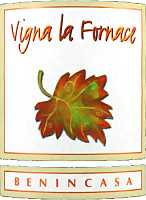
 Cabernet Sauvignon (50%), Merlot (50%)
Cabernet Sauvignon (50%), Merlot (50%) Deep ruby red and nuances of garnet red, little transparency.
Deep ruby red and nuances of garnet red, little transparency. Intense, clean, pleasing and refined, starts with hints of prunes,
black cherry jam and black currant jam followed by aromas of dried violet,
vanilla, tobacco, mace, chocolate, licorice, leather and eucalyptus.
Intense, clean, pleasing and refined, starts with hints of prunes,
black cherry jam and black currant jam followed by aromas of dried violet,
vanilla, tobacco, mace, chocolate, licorice, leather and eucalyptus.
 Properly tannic attack and however balanced by alcohol, good body,
intense flavors, pleasing roundness.
Properly tannic attack and however balanced by alcohol, good body,
intense flavors, pleasing roundness.
 Persistent finish with flavors of prune, black cherry jam and black
currant jam.
Persistent finish with flavors of prune, black cherry jam and black
currant jam.
 18 months in barrique.
18 months in barrique. Roasted meat, Broiled meat and barbecue, Stewed meat with mushrooms, Hard cheese
Roasted meat, Broiled meat and barbecue, Stewed meat with mushrooms, Hard cheese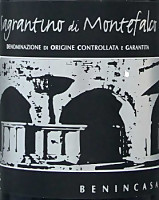
 Sagrantino
Sagrantino Brilliant ruby red and nuances of garnet red, little transparency.
Brilliant ruby red and nuances of garnet red, little transparency. Intense, clean, pleasing and refined, starts with hints of blackberry,
prune and dried violet followed by aromas of black cherry, blueberry,
vanilla, tobacco, chocolate and menthol.
Intense, clean, pleasing and refined, starts with hints of blackberry,
prune and dried violet followed by aromas of black cherry, blueberry,
vanilla, tobacco, chocolate and menthol.
 Tannic attack and however balanced by alcohol, full body, intense
flavors, pleasing roundness.
Tannic attack and however balanced by alcohol, full body, intense
flavors, pleasing roundness.
 Persistent finish with flavors of blackberry, prune and black cherry.
Persistent finish with flavors of blackberry, prune and black cherry. 18 months in barrique.
18 months in barrique. Game, Roasted meat, Stewed and braised meat, Hard cheese
Game, Roasted meat, Stewed and braised meat, Hard cheese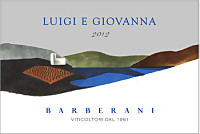
 Grechetto (90%), Procanico (10%)
Grechetto (90%), Procanico (10%) Brilliant straw yellow and nuances of straw yellow, very transparent.
Brilliant straw yellow and nuances of straw yellow, very transparent. Intense, clean, pleasing and refined, starts with hints of apple, plum
and hazelnut followed by aromas of medlar, pear, peach, hawthorn, citrus
fruits, broom, honey, mineral and hints of vanilla.
Intense, clean, pleasing and refined, starts with hints of apple, plum
and hazelnut followed by aromas of medlar, pear, peach, hawthorn, citrus
fruits, broom, honey, mineral and hints of vanilla.
 Crisp attack and however balanced by alcohol, good body, intense
flavors, pleasing roundness.
Crisp attack and however balanced by alcohol, good body, intense
flavors, pleasing roundness.
 Persistent finish with flavors of apple, pear and hazelnut.
Persistent finish with flavors of apple, pear and hazelnut. 12 months in cask, 18 months in bottle.
12 months in cask, 18 months in bottle. Stuffed pasta, Roasted white meat, Roasted fish, Mushroom soups
Stuffed pasta, Roasted white meat, Roasted fish, Mushroom soups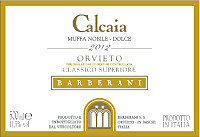
 Grechetto (80%), Procanico (20%)
Grechetto (80%), Procanico (20%) Brilliant amber yellow and nuances of amber yellow, transparent.
Brilliant amber yellow and nuances of amber yellow, transparent. Intense, clean, pleasing, refined and elegant, starts with hints of
dried apricot, dried fig and honey followed by aromas of quince jam, dried
fig, candied fruit, date, peach jam, lychee, almond, musk, saffron and nail
polish.
Intense, clean, pleasing, refined and elegant, starts with hints of
dried apricot, dried fig and honey followed by aromas of quince jam, dried
fig, candied fruit, date, peach jam, lychee, almond, musk, saffron and nail
polish.
 Sweet and round attack, however balanced by alcohol, good body, intense
flavors, pleasing crispness.
Sweet and round attack, however balanced by alcohol, good body, intense
flavors, pleasing crispness.
 Very persistent finish with long flavors of dried apricot, raisin and
date.
Very persistent finish with long flavors of dried apricot, raisin and
date.
 12 months in steel tanks.
12 months in steel tanks. Hard cheese, Dried fruit tarts
Hard cheese, Dried fruit tarts
